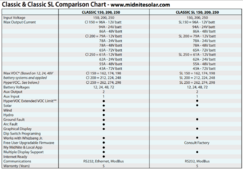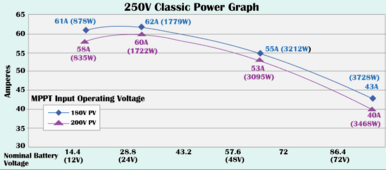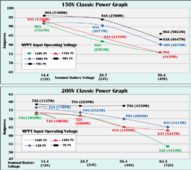I have always regarded Midnite as Tier-1, and they have a good reputation. I now have concerns.
I have encountered an outfit that purchased 8X DC-Solar trailers, and I am helping them figure stuff out - what works, what they need, etc. On at least 2 of them, the Classic 250s have failed. One turns on, boots up, shows the display, but it shorts the PV circuit. The other simply makes a buzzing sound with nothing on the display when battery power is applied. I have confirmed with Midnite Support that these are failure conditions.
MNPV6 boxes are used to provide both the PV and battery breakers.
Of the inverters I have looked at on these trailers, the longest on-time unit is about 20,000 hour. This is the equivalent of 2.5 years of continuous use. I think it's reasonable to assume the MPPT operated for the same period of time.
This is a 25% failure rate in 2.5 years of operation on units that are likely about 8 years old. That's not encouraging.
This user has also been in contact with another user that has several trailers. According to them, they had to replace three failed units (not sure of the percentage).
I am concerned that the Classic 250 is not as reliable as one would infer from their reputation.
Considerations:
- These installations are pretty brutal, i.e., metal boxes that live outside with questionable ventilation next to two big SMA 6kW inverters.
- They are actively cooled with fans. If the fans fail, I suspect the units would eventually fail. Not necessarily a quality issue, but a potential vulnerability.
Midnite indicated a $200-275 typical repair cost (can be much lower and much higher) with a 6 month warranty on repairs. Unfortunately, the 250 is limited to 55A output on a 48V system, which puts even the repair cost at a premium. I am much more inclined to install a Victron 250/100 MPPT for $625 or so rather than pay the typical repair cost.
$625 for 100A MPPT with a 5 year warranty and passive cooling.
$475 for 110A MPPT with a 6 month warrant and active cooling.
I'm sure there are a lot of people out there who can say "I've had mine for 15 years, and it works great." I'm just wondering if these aren't the best choice for this installation type.
Thoughts?





